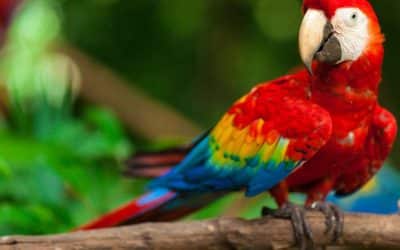Half a Dozen Types in Costa Rica
The biodiversity of Costa Rica never ceases to astound even those with significant botanical knowledge. As a relatively small country, it is home to six different forest categories, each with particular nuances and habitats. The three most predominant are tropical rainforests, cloud forests and tropical dry forests. Coexisting forested areas where mangrove, lowland and riparian tree species thrive are no less intriguing.
Similar but different
Despite the apparent similarities between cloud forests and rainforests, the distinctions are remarkable. To be classified as a tropical rainforest, an area must receive a minimum of 250 centimeters of rain yearly; Costa Rica’s tropical rainforests receive double that amount. The trees within form a dense canopy while providing a base for a variety of epiphytes, which are non-parasitic plants that still use the trunk as a “host.” This canopy limits the amount of vegetation growing underfoot. Rainforests are typically located in lower elevations, primarily near a coastline. In Costa Rica, they are found mostly in the southwest region and southern Caribbean lowlands.
Cloud forests are unique for their mountainside and volcano locales at higher elevations, ranging from around 900 meters to 2,500 meters above sea level. These forests provide a habitat for noticeably more epiphytes, including mosses, ferns and bromeliads. The constant pervading mist is attributed to considerably cooler but more humid climate. Faster-moving rivers in mountainous areas enhance the humidity as well, in contrast to the slower-moving rivers in the flatter rainforests.
Both rainforests and cloud forests are teaming with life, but the differences in altitude and climate make them ideally suited to different wildlife species.
Driest destination
The northwestern corner of Costa Rica, particularly Guanacaste province, is a vast region of mostly tropical dry forest. This area receives nearly all its annual rainfall between the middle of August and early November. As a result, the plant life tends toward water-retentive species, including succulents and cacti. Most other plant life here cycles through an annual flowering, fruit-bearing and seeding process. The extended dry season makes this area of Costa Rica a popular tourist destination.
Extremes and between
Costa Rican mangrove forests are confined to the Pacific coastline, forming a unique convergence of fresh and salt water. The mangroves’ sturdy root system holds this balance together between ecosystems that are centered at river mouths but extend into drier terrain, where limited vegetation and wildlife endure: iguanas, snakes, monkeys, bats and crabs dominate in the harsh climate.
The Costa Rican lowland forests are home to the tallest trees in the country. For some curious reason, the country’s puma and tree frog populations are most abundant in these idyllic forests. Existing from sea level to about 300 meters in altitude, lowland forests support a range of layered habitats populated by unique flora and fauna at varying levels.
Riparian forests, found around freshwater rivers and lakes in Costa Rica, are prone to wildlife inundation. A prime example is Rio Chirripó Preserve, inhabited by more than 260 species of amphibians and reptiles alone. About 400 bird species, especially hummingbirds, live in this diverse park as well.
The real magic lies in the fact that these six varying topographies overlap, creating a true wonderland that we call Costa Rica.






